Clinical Center features STEM innovators
Exhibit on display through August 25, 2023
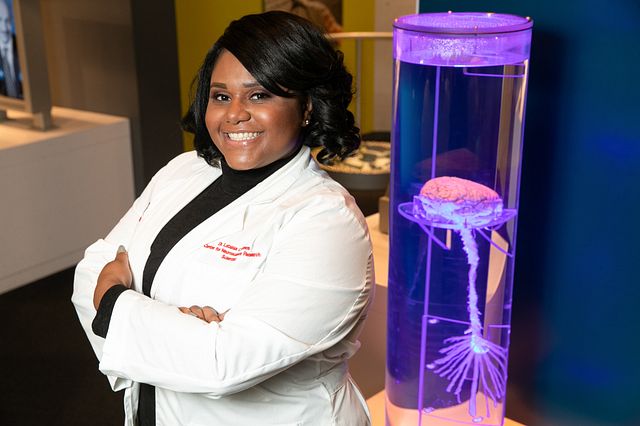
This summer, it won’t just be the hospital’s walls featuring artistic creations.
From May 22 through August 25, 2023, the NIH Clinical Center is hosting ten statues from #IfThenSheCan – The Exhibit. These 3-D printed, life sized statues feature women innovators in science, technology, engineering and math (STEM).
This year, the Clinical Center celebrates seven decades of supporting “firsts” – first innovations on diagnoses for disease, first application of technology and novel approaches and first treatments for our patients.
The hospital’s Office of Communications and Media Relations selected this unique project as a natural tie in to the unique research and care environment exemplified by the NIH Clinical Center.
The IF/THEN project seeks to further advance women in STEM by empowering current innovators and highlighting positive and successful female professional role models.
Women constitute half of the college-educated workforce but make up just twenty-five percent of the STEM industry. This exhibit showcases accomplished STEM role models whose stories can serve as proof that gender is no barrier to any career.
The featured statues represent women who study geologic hazards, work on interstellar travel and nuclear engineering and assess genetic risk factors for lupus and cancer – and that’s just for starters. And many have ties to the NIH.
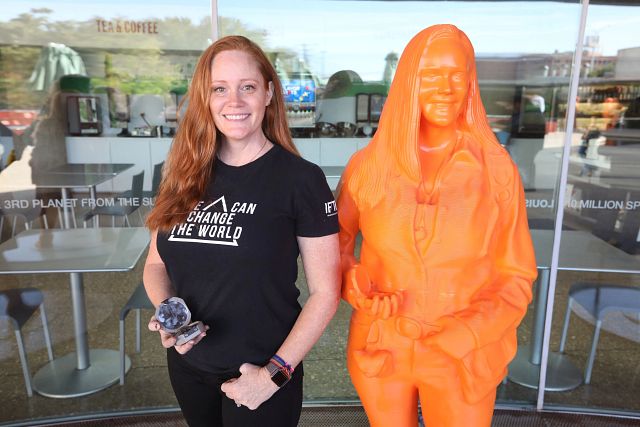
Dr. Wendy Bohon studies earthquakes and mountain building processes and works to improve geologic hazards communication. Bohon didn’t start out with aspirations of becoming a geologist. In fact, her undergraduate major was in Theatre with a focus on Shakespearean acting. She has worked on many tectonics related projects in her career, including the B4 LiDAR project in Southern California, climate and tectonics studies in Northwestern Argentina, GPS deployment projects in Bolivia, thrust fault studies in Argentina and the tectonic evolution of the southwestern margin of the Tibetan Plateau in India. She is a staunch advocate for accumulating a diverse “toolbox” of skills and experiences.
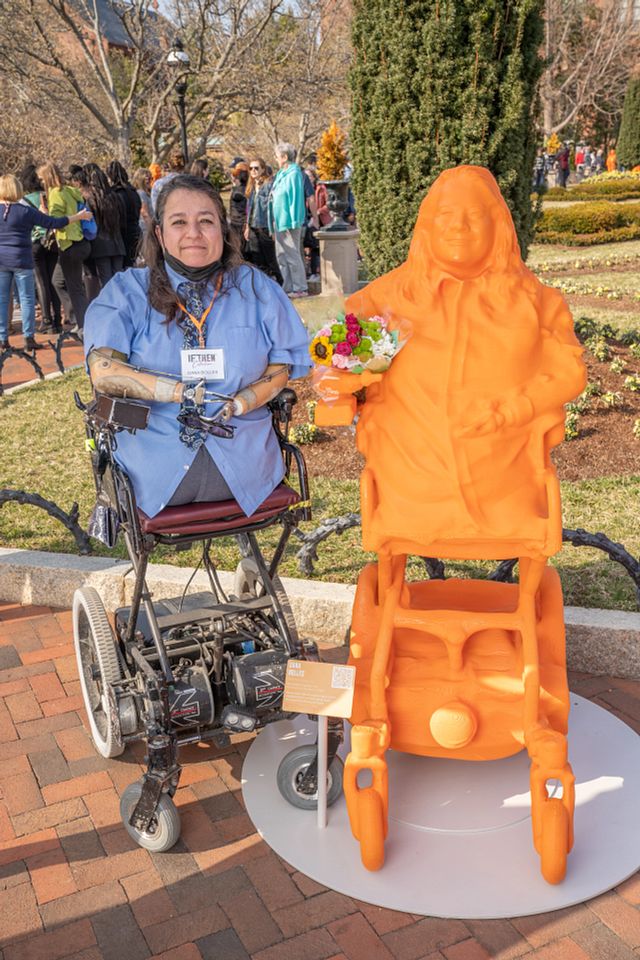
Dana Bolles started at NASA in 1995 as a payload safety engineer in the space shuttle program at Kennedy Space Center and has worked at four NASA centers and NASA headquarters. Bolles has worked on the Mars ‘98 Orbiter, also called the Mars Climate Orbiter; the Tracking and Data Relay Satellite; and the third assembly flight of the International Space Station. She is a strong advocate for the disabled who work in Science, Technology, Engineering and Math (STEM).
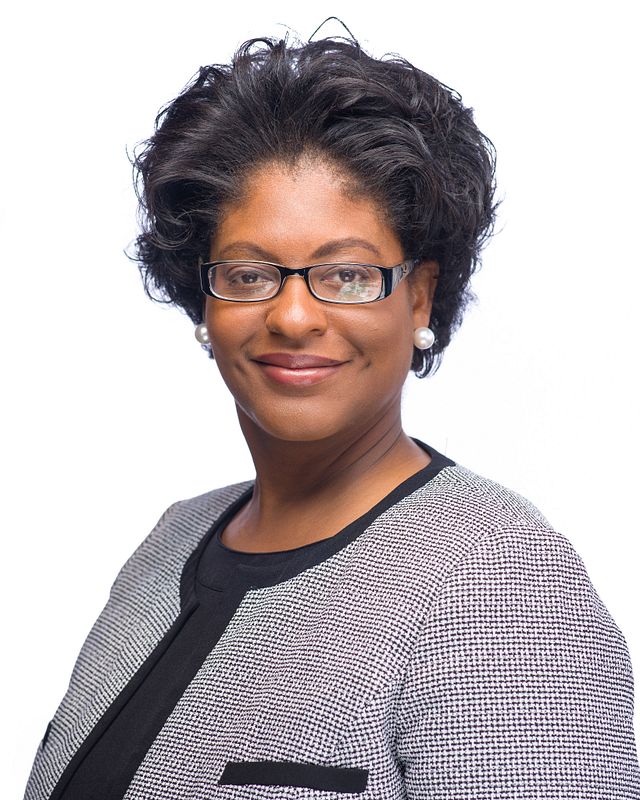
Dr. Joyonna Gamble-George is an Underrepresented Biomedical Researcher scholar looking at prescription opioid misuse, heart failure and genetic risk factors involved in inflammation in systemic lupus erythematosus using datasets from the NIH All of Us research program. She has more than a decade of research expertise in the area of Alzheimer’s disease pathology, anxiety and stress-related disorders, neurotoxicity, drug addiction and therapeutics for the National Heart, Lung, and Blood Institute.
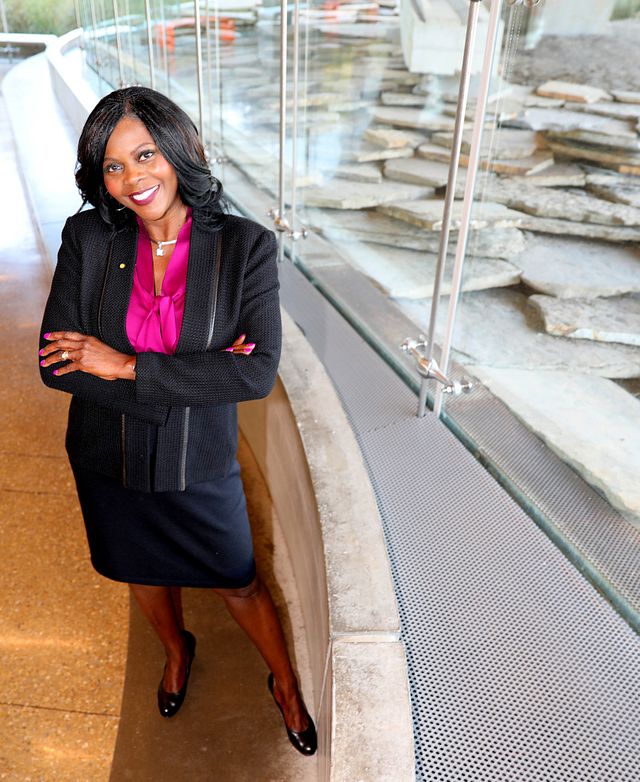
Dr. Chavonda Jacobs-Young serves as the U.S. Department of Agriculture’s under secretary for Research, Education, and Economics and chief scientist. In 1998, she became the nation’s first African American Ph.D. in Paper Science and Engineering and worked at the White House as a senior policy analyst for agriculture from 2008-2010.
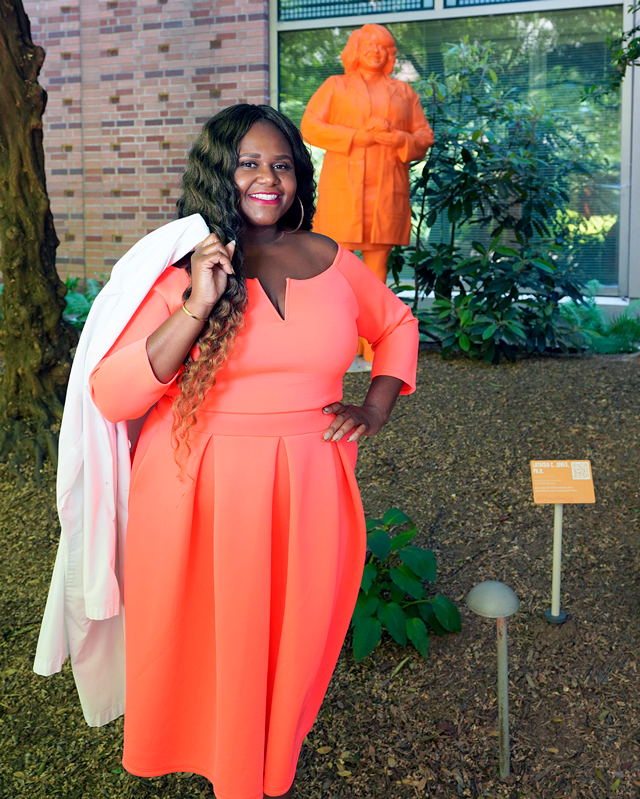
Dr. Lataisia Jones is a scientific research officer in the Scientific Review Branch at the National Institute of Neurological Disorders and Stroke. She is the first African American to earn a Ph.D. from the Department of Biomedical Sciences at Florida State University where she studied cellular division, diabetes and brain development. Jones started a program called Young Scientist Wednesdays where she uses fun activities like sculpting and DNA extraction to teach science to kids at Children’s National Hospital.
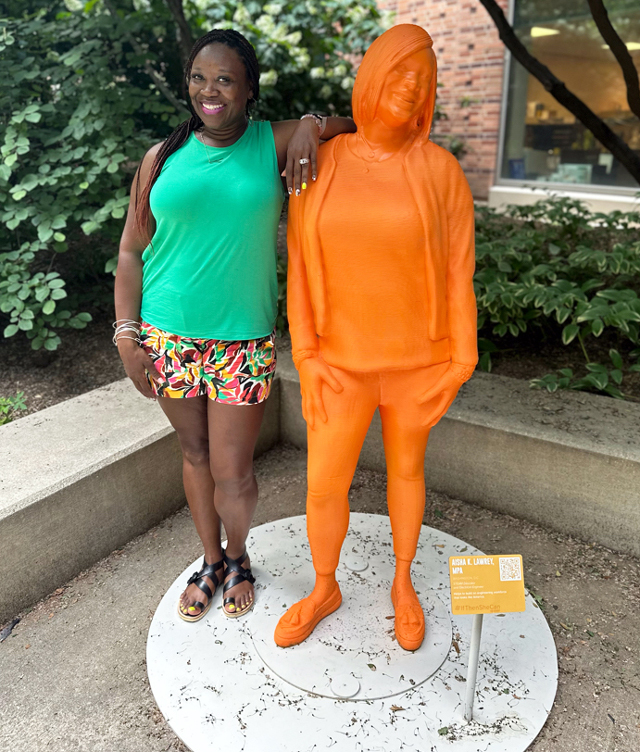
STEM (Science, Technology, Engineering and Math) advocate Aisha Lawrey has 20 years of experience working in industry, government, nonprofits, and education. Her focus is on increasing the number of women and minorities in engineering and she has recently worked with the American Society of Mechanical Engineering and the National Action Council for Minorities in Engineering.
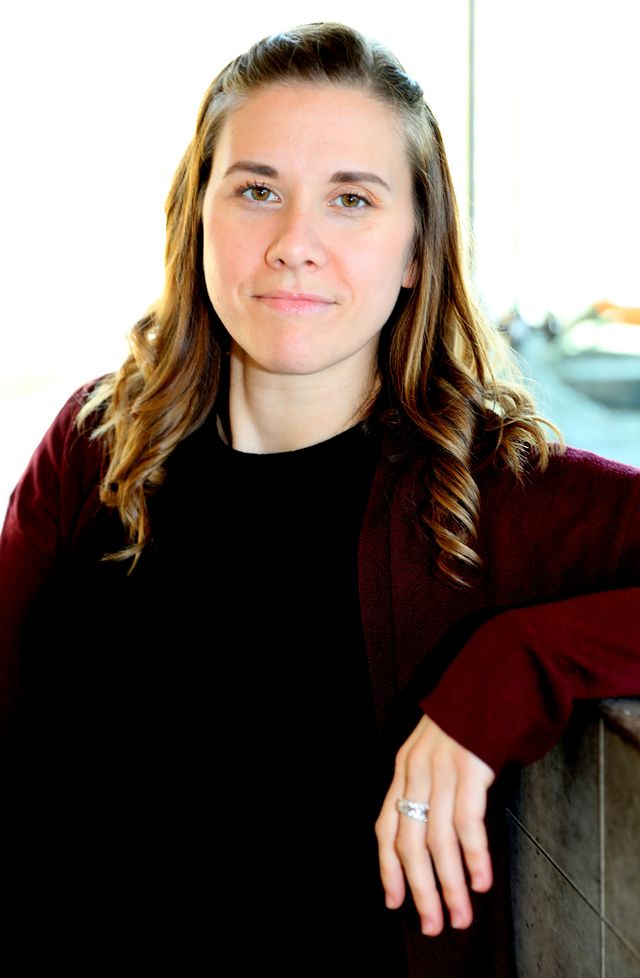
Dr. Tiffany Panko is an early-career researcher and director of the Deaf Health Laboratory at Rochester Institute of Technology. The Deaf Health Lab aims to promote health justice through research and initiatives in health priority areas including, but not limited to, healthcare systemic barriers, health literacy and preventive health. Panko was born to Deaf parents and gives back to the Rochester community, especially for women like herself, who are Deaf and use American Sign Language.
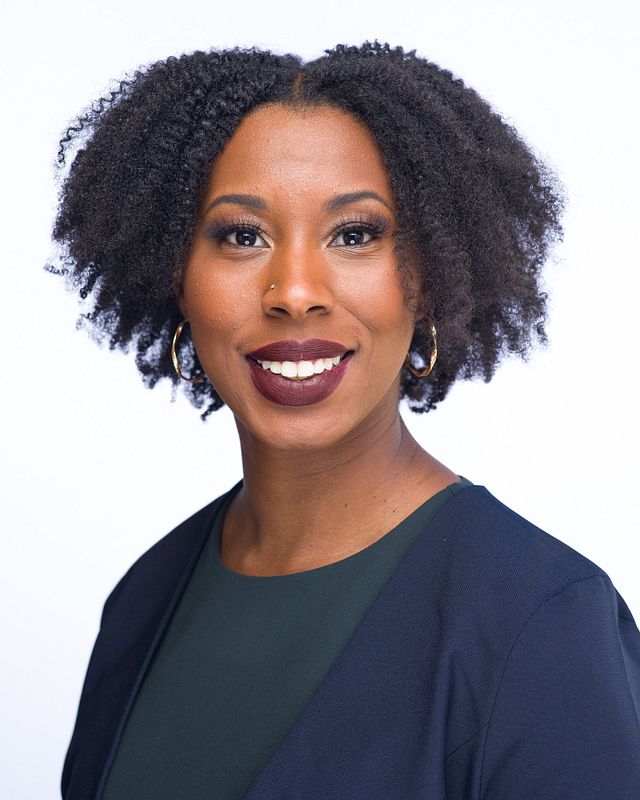
Dr. Ciara Sivels is a nuclear engineer at the Johns Hopkins University Applied Physics Laboratory, where she works on projects using radiation detection and modeling. In 2018, Sivels earned her PhD in nuclear engineering from the University of Michigan, considered the top nuclear engineering program in the United States, becoming the first Black woman to do so at Michigan. She has first authored four publications on nuclear explosion monitoring and treaty verification.
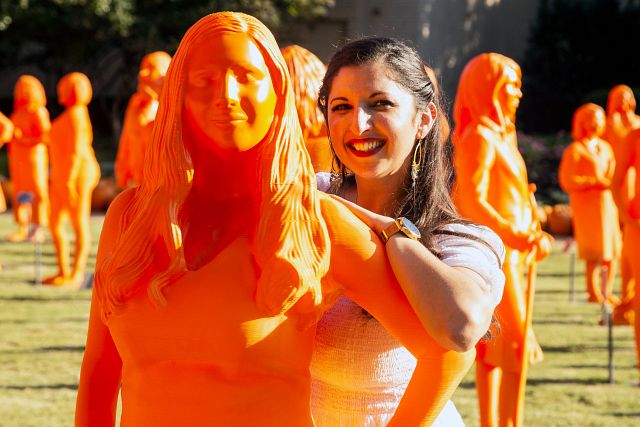
Dr. Jessica Taaffe is a PhD microbiologist, and has worked at the NIH, as a postdoc in Dr. Patrick Duffy’s Laboratory of Malaria Immunology and Vaccinology at NIAID; as a World Bank consultant, providing evidence on how to improve HIV programs to global policymakers; and she has written high-level HIV reports for the United Nations.
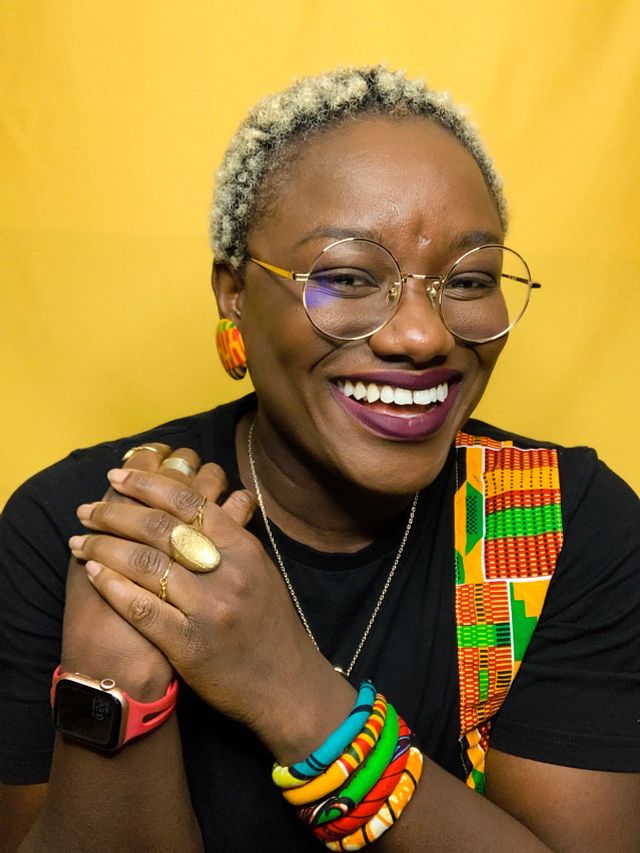
Originally from Ghana in West Africa, Dr. Danielle Twum combines her training as a cancer immunologist with the skills she has learned working in biotech to translate scientific jargon into every day, accessible language. She studied the effects of climate change on coral bleaching at Vassar College and earned her PhD in Cancer Immunology from the University at Buffalo where she studied the immunology of breast cancer metastasis.
The full exhibit features 120 statues of female innovators. Each subject stood in a scanning booth that combined 89 cameras and 25 projectors to generate a 3D image. To print the image, a special machine slowly built up layers of acrylic gel. Ten (or more) hours later the result was a full-sized 3D-printed human figure.
Since 1984, the NIH Clinical Center has curated an art collection, made possible in part through donations from artists, patients, staff and visitors, to provide comfort to patients and enhance the healthcare environment. This collection has more than 2,000 pieces of art including photography, sculptures, paintings, collages, watercolors, textiles, folk art and glass.
The IF/THEN exhibit is available to NIH thanks to the Lyda Hill Philanthropies and is on display in the Clinical Center Atrium and East courtyard/Healing Gardens from May 22 to August 25, 2023.
- Donovan Kuehn